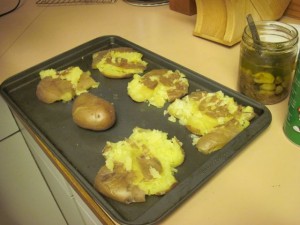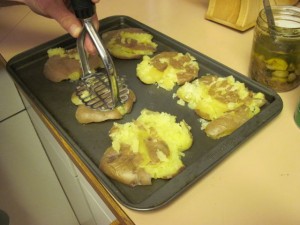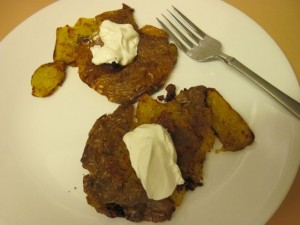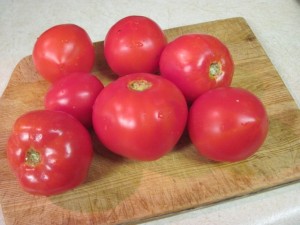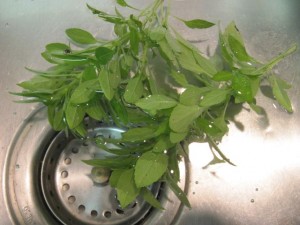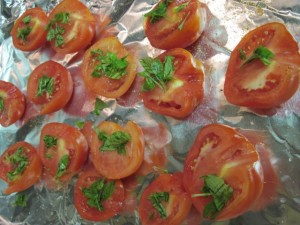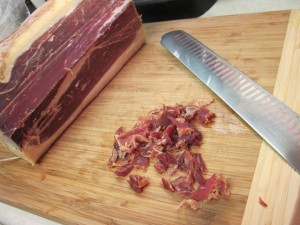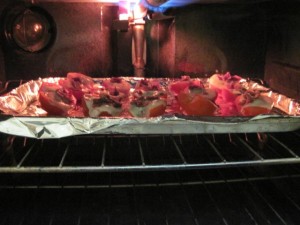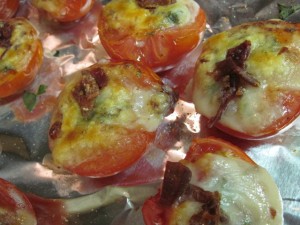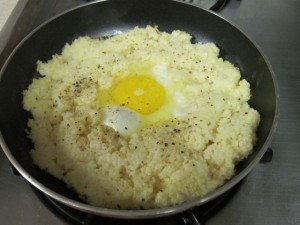Why in the world would you want to grind your own polenta, cornmeal or corn flour? If you have ever smelled the fragrant aroma of your own freshly ground corn, then you know.
But I didn’t myself realize this until well into a recent experiment to test out the process of grinding my own corn.
John and I figured we’d just use some frozen corn kernels from the store. We figured that if the process worked out satisfactorily, then we’d be set to go next year in CO at summer’s end peak harvest season when fresh corn is plentiful and cheap. If working with fresh corn though, we’d need to add the steps of cutting the kernels from the cob and steaming (both of which have already been done for the commercially frozen, albeit more expensive option).
For the experiment, I started with 2 – 12 ounce packs of frozen corn kernels.
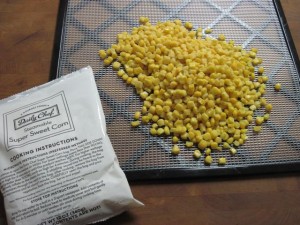
I spread each 12 ounce bag of frozen corn on a mesh insert tray for my Excalibur dehydrator. (I use a Excalibur 3926T model with 9 trays and a 26-hour Timer.)
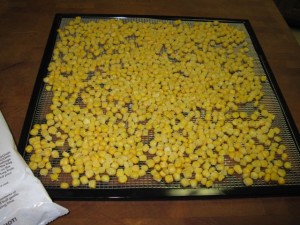
After 6 hours at 125o F, the corn is dry and shrunken somewhat as you see here.

The weight loss is more dramatic at almost 75%. The original 24 ounces of corn weighs just 6.4 ounces after drying.
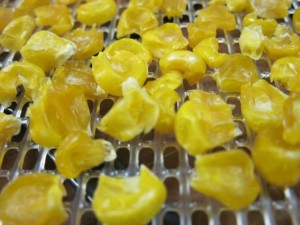
After the dehydration process, 24 ounces of frozen corn had shrunk down to filling a pint glass jar to the top.

Screw a lid on the jar to seal airtight until ready for grinding.
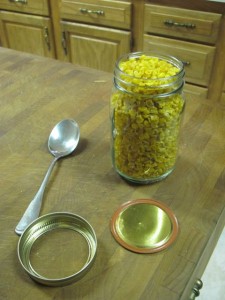
I do have a hand-crank stone mill grinder, but wanted to try my new Omega J8006 Nutrition Center Commercial Masticating Juicer, Black and Chrome. Although this experiment with the dehydrated corn has just a relatively small amount for hand grinding, my plan is that I would prefer to use my electric Omega for larger amounts.
Originally I got this Omega Juicer for juicing (well, of course!). But this workhorse machine can do so much more, such as grinding, making pasta, etc. (and I am planning to eventually put it through all its paces – so stay tuned for more of my experiments and adventures).
So in anticipation of next year’s bounty of corn at the end of the summer, I will test the Omega right now for how well it does as a grinder.
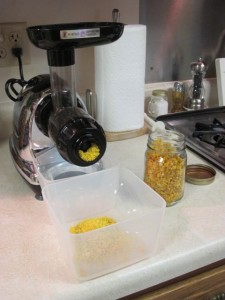
Here is what the ground corn is looking like as it comes out of the end cap of the Omega Juicer.
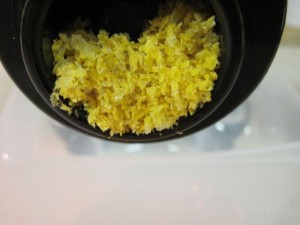
AND – here is where I was stunned by the fragrant aroma of the corn as it was being ground. If you can imagine the wonderful aroma of baking cornbread (but of course nothing is being baked — yet!) That is about the only thing I can liken it to. I wish you could have been here to enjoy it with me.
I would consider that the results of the first pass of ground corn using the Omega Juicer’s auger mechanism is suitable for polenta / corn grits. We LOVE grits, so I can see that I would definitely sometimes just want to stop at this stage without a second pass of grinding. But since this is an experiment with just a small amount, I’ll have to defer using this batch for grits.
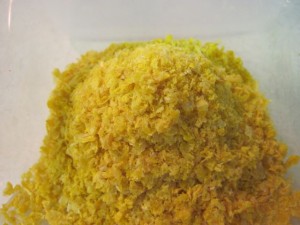
So now I do a second pass of grinding the corn.
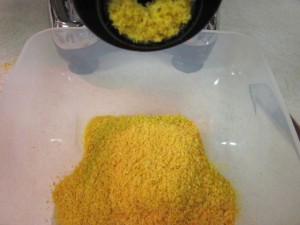
The results are a more finely ground cornmeal consistency. We LOVE cornbread, too, so I can tell we won’t have any problem using this.
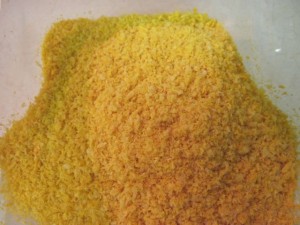
When the cornmeal is transferred back into the pint jar, it reaches just a bit under the normal fill level – i.e. a scant 2 cups.

Sealing the jar airtight will keep as much of the fresh, fragrant aroma as possible. But just as spices can lose their best aroma soon after being ground, I think it is probably best to only grind the amount of corn one is planning to use in the relative near-term (perhaps 1 week?). The results of this experiment shows that the volume of dehydrated whole kernels is negligibly greater than the ground volume. I can get the boon of the wonderful fragrance of the freshly ground corn in my favorite recipes without sacrificing storage space.
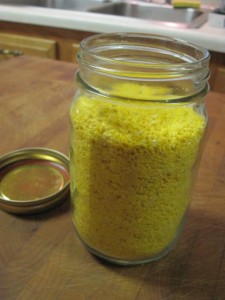
So call me corny if you want. But I couldn’t be more satisfied, nor be enjoying myself so much, when doing home-y things like grinding my own corn. I hope this inspires you to try it yourself if you have not already.
Disclosure: I have included Amazon affiliate links for the Excalibur Dehydrator and Omega Juicer products I personally purchased and used in photos to go along with this blog post. If you click on a product link and purchase the item, I will receive a small commission in exchange for the sales referral. There is no obligation on your part to purchase, nor sharing of your private information.

